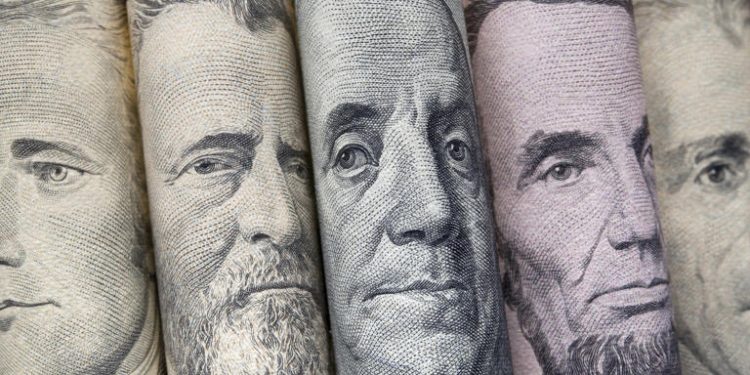Many people dream of discovering a rare, valuable bill hidden in their wallet or tucked away in a drawer. While it’s unlikely that the average person will come across paper currency worth tens of thousands of dollars, the possibility is always there — and isn’t that the thrill of treasure hunting?
Paper currency has evolved significantly since it first appeared centuries ago. Over time, some bills (and denominations) have been discontinued, while others have become increasingly rare. The few that are still around and in excellent condition have become highly sought after and valuable.
If you’re wondering whether you might have a rare bill that’s worth a lot now or could increase in value soon, here are some predictions to consider.
Keep in mind that these predictions are based on the current and historical value of these bills. If you find a rare bill, it’s a good idea to have it appraised to determine its actual value.
$10 National Gold Bank Notes
This Article Includes [hide]
- 1 $10 National Gold Bank Notes
- 2 1882 $5 Brown Back Banknote
- 3 1890 U.S. Grand Watermelon $1,000 Treasury Note
- 4 Triple Signature $10 Silver Certificate
- 5 1901 $10 Banknote
- 6 1900 $10,000 Gold Certificate
- 7 1922 $10 Gold Certificate Large Size Note
- 8 $1 Original Delaware Note
- 9 1928 $500 (D-Cleveland)
- 10 1882 $10 Brown Back Territorial National Bank Note
- 11 Grading Rare Bills
- 12 Predicting a Bill’s Future Value
- Value: $1,000 to $10,000
- Grading: N/A
1882 $5 Brown Back Banknote
- Value: $7,380
- Grading: 66 (gem uncirculated)
1890 U.S. Grand Watermelon $1,000 Treasury Note
- Value: Over $1 million
- Grading: 50 (about uncirculated)
Triple Signature $10 Silver Certificate
- Value: Over $40,000
- Grading: 30 (very fine)
1901 $10 Banknote
- Value: $2,200
- Grading: 35 (very fine)
1900 $10,000 Gold Certificate
- Value: $4,695
- Grading: 20 (very fine)
1922 $10 Gold Certificate Large Size Note
- Value: $2,735.16
- Grading: 67 (superb gem uncirculated)
$1 Original Delaware Note
- Value: $1,680
- Grading: 30 (very fine)
1928 $500 (D-Cleveland)
- Value: $2,695
- Grading: 25 (very fine)
1882 $10 Brown Back Territorial National Bank Note
- Value: $200 to over $2,000
- Grading: 20 (very fine)
Grading Rare Bills
Two main grading systems are commonly used to determine the value and condition of paper currency:
- PMG: According to its official site, PMG certification helps determine a note’s value because collectors, dealers, and auction houses worldwide trust and understand PMG’s grades. It also makes researching the value of different notes easier.
- PCGS: PCGS grades paper currency on a scale from 1 (poor) to 70 (supreme gem uncirculated). Generally, the higher the grade, the more valuable the note.
Predicting a Bill’s Future Value
Ultimately, there’s no way to predict exactly how much paper currency — or anything else — will be worth in the future. The future is uncertain.
However, you could be holding onto something highly valuable if it meets one or more of these conditions:
- It has a high PCGS or PMG grading.
- It has an unusual size (larger or smaller than standard bills).
- It’s no longer in circulation.
- It features an unusually high denomination (e.g., $500).
- It has a high serial number.
- It contains misprints, like different denominations on the front and back.
- It’s very old but still in decent condition.
If you’re uncertain about the value of your old bills, you can check with online auction houses like Heritage Auctions for a free estimate.
You can also take your currency to a local coin dealer who specializes in rare bills. Alternatively, you can ask for advice on online forums such as r/Currency. Be prepared to provide photos for a more accurate assessment.


